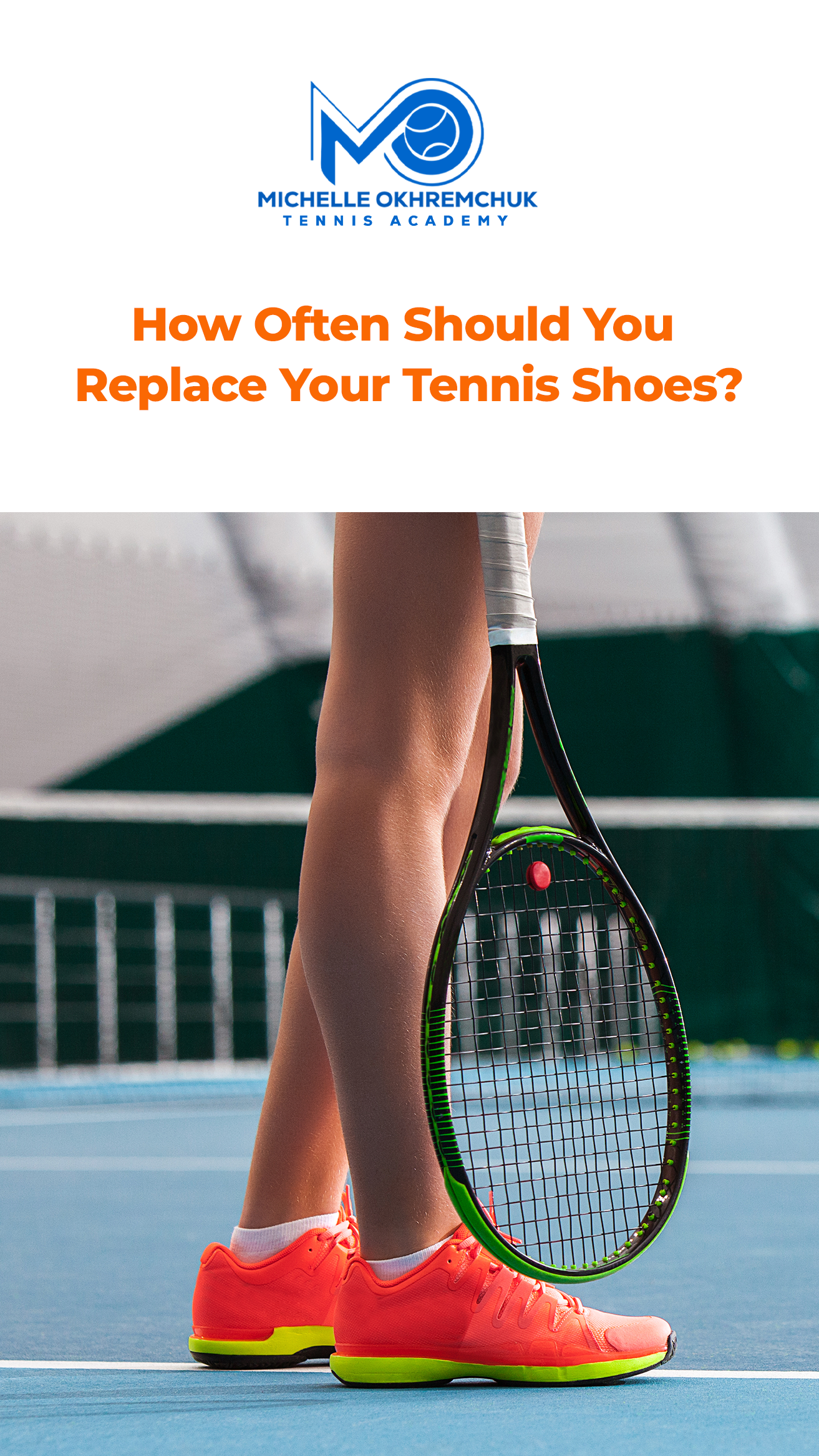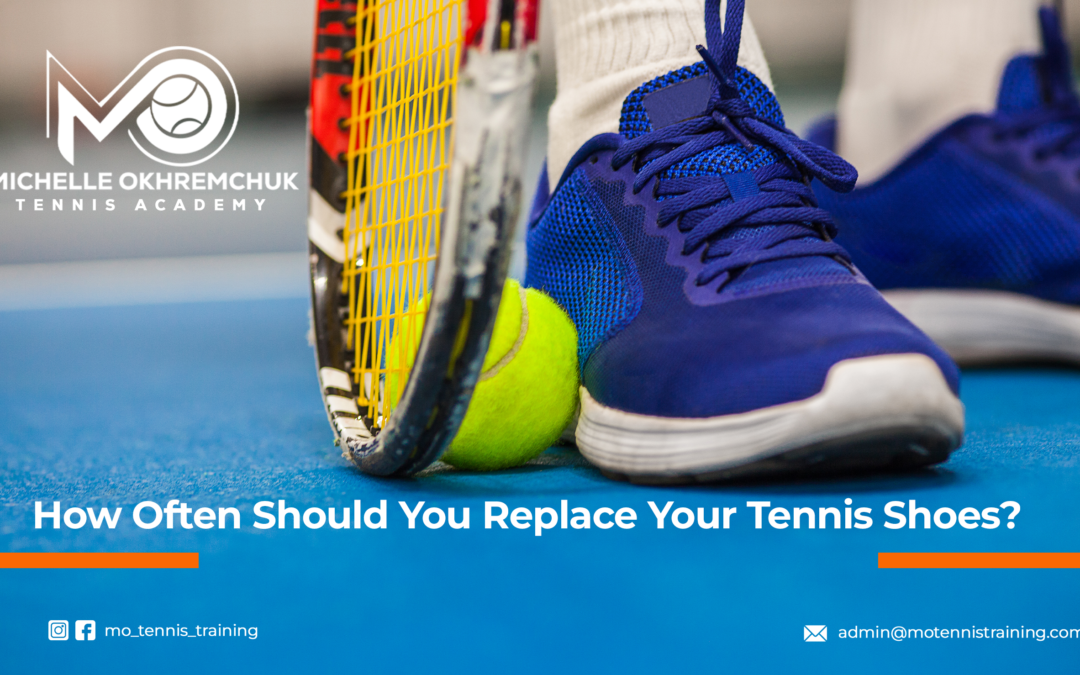Ensuring your feet are properly supported during physical activity is essential for comfort and injury prevention. Whether you’re pounding the pavement on a run or dominating the court in a game of tennis, your choice of footwear plays a crucial role in your performance and safety.
But how do you know when it’s time to bid farewell to your trusty pair of tennis shoes or workout sneakers? In our guide, we dive deep into this important question, providing expert insights and practical advice to help you make informed decisions about your footwear.
As your shoes bear the brunt of your athletic endeavors, they inevitably undergo wear and tear, impacting their ability to provide adequate support and protection. While conventional wisdom suggests replacing shoes based on the number of hours worn, the reality is more nuanced. Factors such as usage patterns, signs of wear, and shoe construction all play a role in determining their lifespan.
Join us as we unpack the intricacies of tennis shoe maintenance and replacement, drawing on insights from industry experts and experienced athletes. With our comprehensive guide, you’ll learn how to extend the life of your shoes and ensure optimal performance, stride after stride.
So lace up your sneakers, and let’s get into it!
The Importance of Replacing Your Tennis Shoes
Your tennis shoes are more than just a fashion statement on the court; they are your support system. Over time, your shoes’ cushioning and stability will naturally wear down with each serve and sprint.
Wearing worn-out tennis shoes can lead to discomfort, blisters, and even increase the risk of injuries like ankle sprains or stress fractures. When your footwear loses its ability to absorb shock and maintain traction, it hinders your agility and performance.
Regularly replacing your tennis shoes ensures you have the support and protection for optimal play. It’s an investment in both your game improvement and long-term foot health. So, don’t underestimate the impact of quality footwear – it could be the game-changer you’ve been looking for!
Factors that Affect the Lifespan of Tennis Shoes
The lifespan of your tennis shoes is influenced by various factors that can impact their durability and performance. One key factor is the frequency of use – the more often you play tennis, the quicker your shoes will wear out. Another important aspect to consider is the playing surface; hard courts tend to cause more wear and tear compared to clay or grass courts.
Additionally, how well you maintain your tennis shoes can significantly affect how long they last. Proper cleaning, storing them in a cool, dry place, and rotating between multiple pairs can help extend their lifespan.
The quality of materials used in manufacturing also plays a role. Higher-quality materials generally offer better durability and support for longer periods.
How you move on the court can impact shoe longevity too. Dragging your feet excessively or sudden stops may accelerate wear and tear on your shoes.
By being mindful of these factors, you can make informed decisions about when it’s time to replace your tennis shoes before they compromise performance or comfort during play.
Signs that It’s Time to Replace Your Tennis Shoes
As avid tennis players, we often develop a strong attachment to our trusty tennis shoes. However, it’s essential to recognize when they have reached the end of their lifespan. One clear sign that it’s time to replace your tennis shoes is visible wear and tear on the outsole. If you notice significant balding or smoothing of the tread pattern, it may be impacting your traction on the court.
Another indicator that your tennis shoes need replacing is discomfort or pain during play. As cushioning and support deteriorate over time, you may start feeling increased pressure on your feet, ankles, or knees. Additionally, if you observe any signs of structural damage such as loose stitching, separation between the sole and upper part of the shoe, or deformities in the shape of the shoe itself, it’s a definite signal for an upgrade.
Listen to what your body and performance are telling you – worn-out tennis shoes can lead to decreased stability and increased risk of injury while playing. So keep an eye out for these signs that indicate it’s time to bid farewell to your old faithfuls and welcome a new pair onto the court!
How Often Should You Replace Different Types of Tennis Shoes?
The frequency of tennis shoe replacement can vary based on factors like usage and shoe quality. Replacing their tennis shoes every 6-12 months is generally recommended for recreational players who play a few times a month.
For more serious players who train regularly or compete in tournaments, replacing tennis shoes every 3-6 months may be necessary to maintain optimal performance and support. High-performance tennis shoes designed for competitive play tend to wear out faster due to their advanced features.
On the other hand, casual or lifestyle tennis shoes worn off the court can last longer since they are not subjected to rigorous athletic activities. It’s important to pay attention to signs of wear such as sole thinning, decreased cushioning, or visible damage to know when it’s time for a new pair.
Tips for Extending the Lifespan of Your Tennis Shoes
To prolong the lifespan of your tennis shoes, it’s essential to rotate between multiple pairs. By alternating between shoes, you allow each pair to dry out fully between uses, preventing moisture buildup that can break down materials and cause odors. Additionally, investing in a shoe deodorizer or using baking soda can help absorb excess moisture and keep your shoes smelling fresh.
Regularly cleaning your tennis shoes is also crucial in maintaining their quality. Remove dirt and grime after each use with a gentle brush or damp cloth. Avoid tossing them in the washing machine, as this can damage the structure and cushioning of the shoes.
Proper storage is key to preserving your tennis shoes. Keep them away from direct sunlight, extreme temperatures, and humidity to prevent premature aging of materials like rubber soles or synthetic uppers. Consider investing in high-quality shoe inserts or insoles for added comfort and support during gameplay.
The Impact of Wearing Worn-Out Tennis Shoes on Performance and Injury Risk
Wearing worn-out tennis shoes can have a significant impact on both your performance and risk of injury. When the cushioning and support in your shoes degrade over time, it can affect your movement on the court. This may lead to discomfort, reduced stability, and compromised agility during gameplay.
Worn-out shoes are less effective at absorbing shock from sudden movements like sprints or quick stops. As a result, you may experience increased strain on your joints and muscles, which could potentially lead to injuries such as sprains or stress fractures.
In addition to physical repercussions, wearing deteriorated tennis shoes can also impact your confidence on the court. Subconsciously feeling insecure about your footwear may hinder your focus and overall mental game while playing matches or training sessions.
To avoid these negative consequences, it’s crucial to regularly assess the condition of your tennis shoes and replace them when signs of wear become evident. Your performance and safety are worth investing in proper footwear maintenance.
Conclusion
Replacing your tennis shoes regularly is essential for maintaining optimal performance and reducing the risk of injuries. By understanding the factors that affect the lifespan of your tennis shoes and recognizing the signs that indicate they need to be replaced, you can ensure that you always have proper footwear for training and playing.
Remember to consider the type of tennis shoes you use and how often you engage in activities that wear them out faster. By following our tips for extending their lifespan, such as rotating multiple pairs or cleaning them properly, you can get more mileage out of each pair.
Investing in new tennis shoes when needed will benefit your game and protect your feet from potential damage. Stay on top of your tennis shoe maintenance to keep performing at your best on the court.


